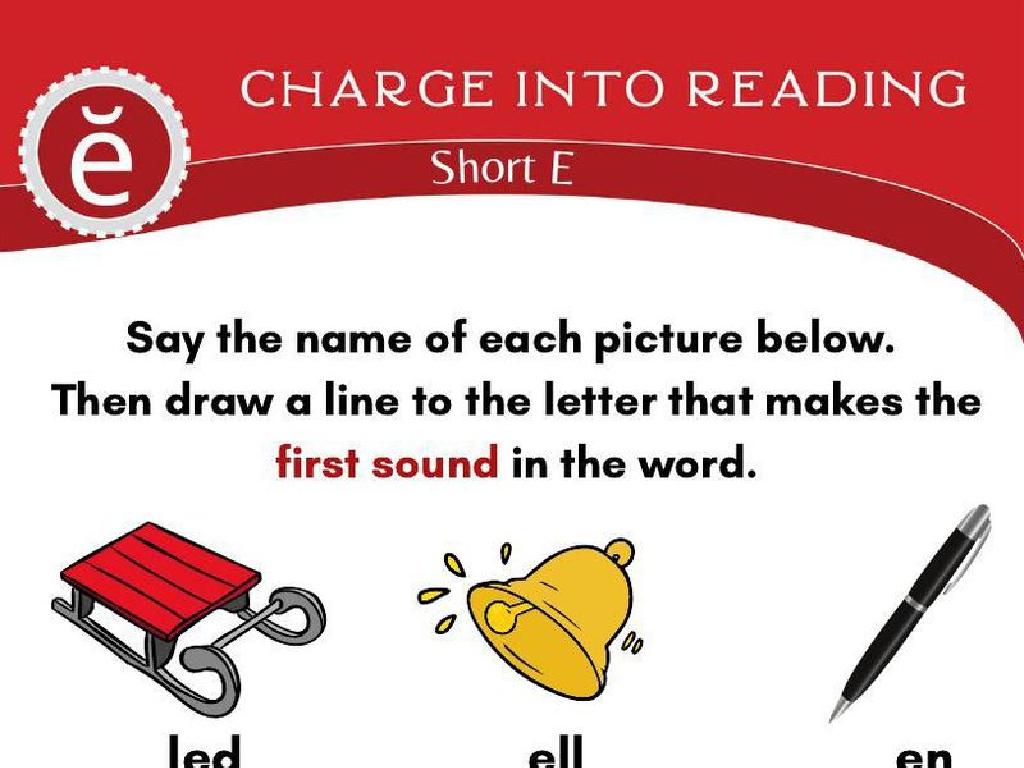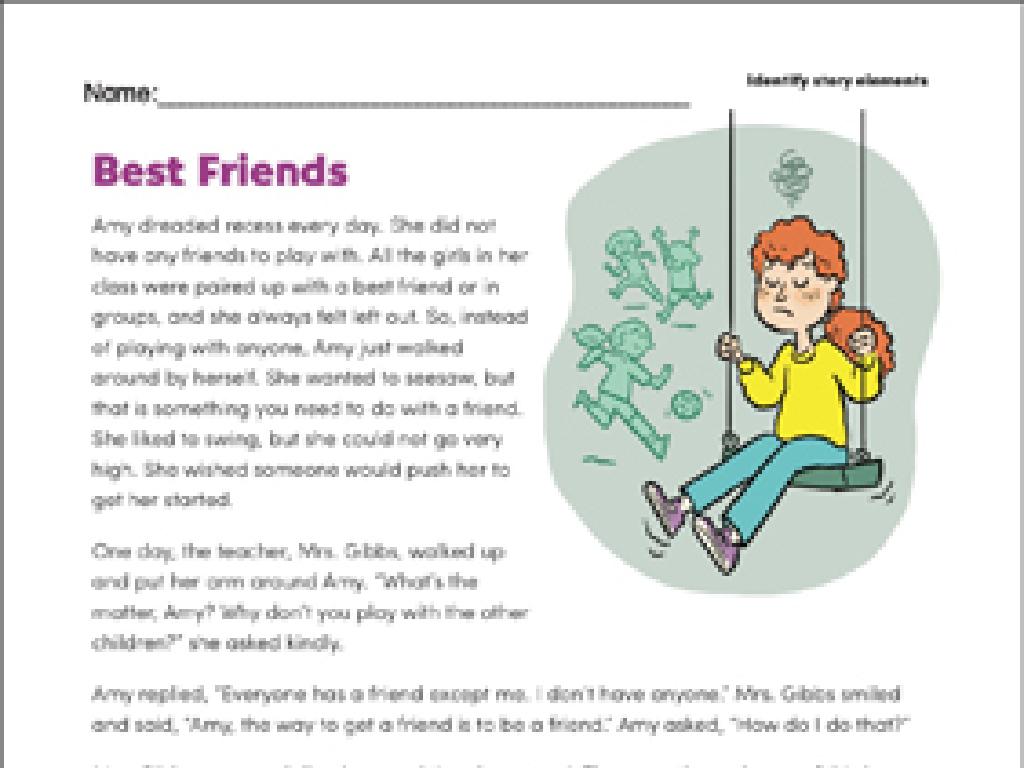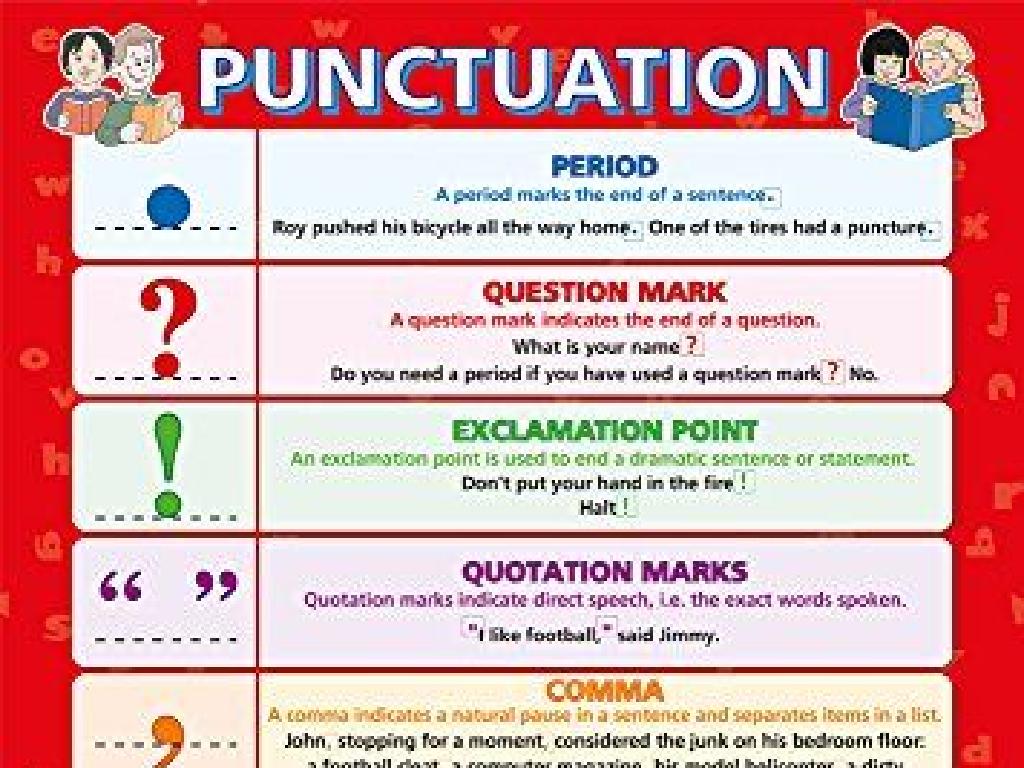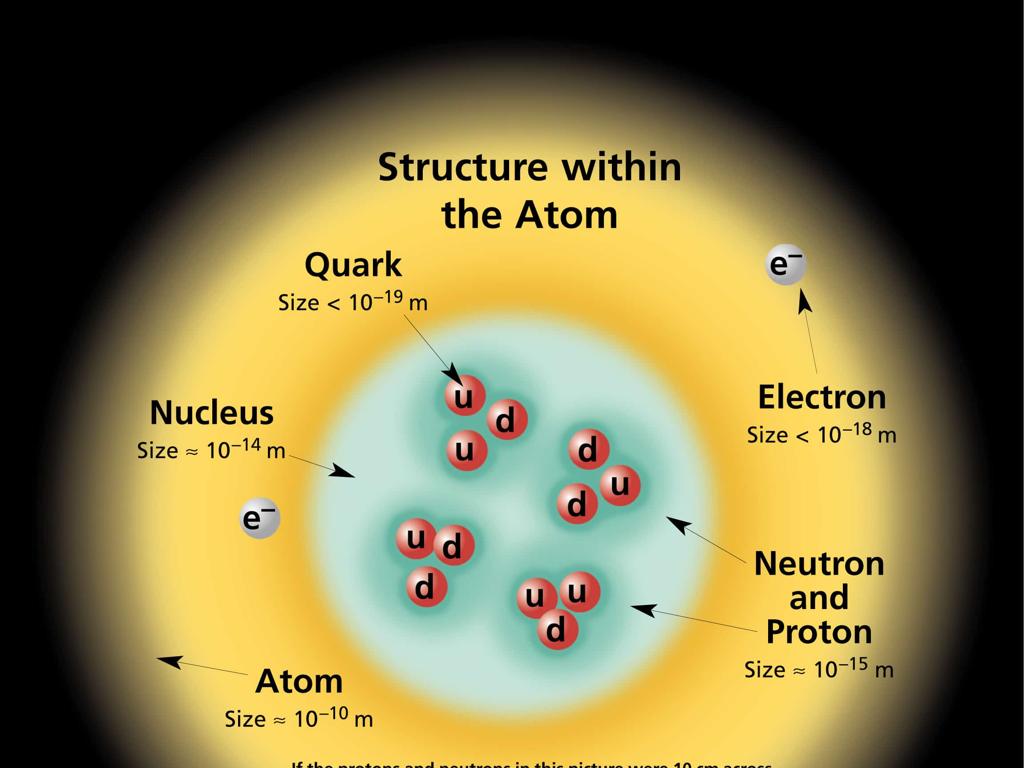Use Cube Trains To Solve Subtraction Word Problems - Up To 5
Subject: Math
Grade: Kindergarten
Topic: Subtraction Word Problems Up To 5
Please LOG IN to download the presentation. Access is available to registered users only.
View More Content
Welcome to Subtraction!
– Greetings, young mathematicians!
– Subtraction means taking away
– If you have 5 blocks and give away 2, subtraction helps you count the remaining.
– It shows us what’s left over
– After taking some away, we count the rest to see how many are left.
– We’ll practice with cube trains
– Using colorful cubes, we’ll make trains and remove some to solve problems.
|
This slide introduces the concept of subtraction to kindergarten students in a fun and engaging way. Start by greeting the students warmly to capture their attention. Explain that subtraction is simply the process of taking away items from a group and finding out how many items remain. Use tangible examples like toys or blocks to illustrate this point. For the activity, use cube trains to visually demonstrate subtraction problems. For example, create a train with 5 cubes and then take 2 away, asking the students how many are left. Encourage the students to use their cube trains to solve similar problems, ensuring they understand the concept of ‘taking away’ and ‘how many are left’. This hands-on activity will help solidify their understanding of basic subtraction.
Understanding Subtraction with Cube Trains
– Subtraction means taking away
– It shows how many are left
– Imagine 5 cookies, eat 2, count left
– If you had 5 cookies and ate 2, you would have 3 cookies left.
– Use cubes to see subtraction
– We’ll use cube trains to take away cubes and see how many we have left.
|
This slide introduces the concept of subtraction to Kindergarten students using relatable examples and hands-on activities with cube trains. Start by explaining subtraction as the process of taking away items from a group and finding out what’s left. Use the example of cookies, which is tangible for young learners, to illustrate subtraction: If you start with 5 cookies and eat 2, you can count the remaining cookies to find the answer. Then, transition to using cube trains, where students can physically remove cubes to solve subtraction problems. This visual and tactile method helps solidify the concept of ‘taking away’ in their minds. For the activity, provide different scenarios with cube trains and guide the students to subtract cubes and find out how many are left. Encourage them to verbalize their thought process to enhance understanding.
Subtraction with Cube Trains
– Cube trains visualize subtraction
– Each cube represents one item
– Imagine each cube is a toy or a fruit
– Remove cubes to find what’s left
– If we start with 5 cubes and take 2 away, how many do we have now?
– Practice with real examples
– Try with 5 apples: if you eat 2, how many are left?
|
This slide introduces the concept of using cube trains to solve subtraction problems, which is a tangible method for Kindergarten students to understand subtraction. Each cube in the train represents one item, and by physically removing cubes, students can see the result of subtraction. Teachers should demonstrate with actual cube trains in class, and then let students practice with real objects like toys or fruits. For example, if a student has 5 toy cars and gives away 2, they can remove 2 cubes from the train to see that 3 are left. This hands-on activity will help solidify the concept of ‘taking away’ in subtraction.
Let’s Make a Cube Train!
– Create your cube train
– Begin with 5 cubes
– Remove some cubes
– How many cubes are left after taking away 1 or 2?
– Count the remaining cubes
– Practice subtraction by counting what’s left
|
This activity is designed to introduce Kindergarten students to the concept of subtraction in a tangible and interactive way. By using physical blocks to create a ‘cube train,’ children can visually and physically engage with the process of ‘taking away’ to understand subtraction. Start with a train of 5 cubes, then ask the students to remove 1 or 2 cubes and count the remaining cubes. This hands-on activity helps solidify the concept of subtraction by allowing students to see the transformation from 5 to a smaller number. Encourage the students to repeat the activity with different numbers of cubes taken away. Possible variations of the activity could include: removing different numbers of cubes, starting with different numbers of cubes (up to 5), or having students work in pairs to solve subtraction problems together.
Solving Subtraction Word Problems with Cube Trains
– Understand the story problem
– What is happening in the story? How many toys are there at the start?
– Use cube trains for subtraction
– Take away cubes to show toys given away
– Solve a toy sharing story
– If Max had 5 cars and gave 2 to Lily, how many does he have now?
– Discuss our answers together
|
This slide introduces students to the concept of using cube trains to solve subtraction word problems. Start by reading a simple story problem to the class, ensuring they understand the scenario. Demonstrate how to use cube trains by physically removing cubes to represent the subtraction mentioned in the story. For example, use a story about a child sharing toys and subtract cubes as the toys are given away. After solving the problem with the cube trains, discuss the result with the class to confirm their understanding. Encourage students to visualize the subtraction process and to articulate their thought process. This hands-on activity will help solidify their understanding of subtraction in a practical and engaging way.
Solving Subtraction with Cube Trains
– Start with Tommy’s 5 apples
– Give 2 apples to a friend
– Use cubes to show taking away
– Represent apples with cubes, remove 2
– How many apples left with Tommy?
– Count the remaining cubes for the answer
|
This slide introduces a practical subtraction problem involving Tommy and his apples to help Kindergarten students understand the concept of taking away. Begin by explaining the problem and setting the scene with Tommy’s apples. Use physical cube trains or a visual representation to show the 5 apples (cubes) Tommy starts with. Then, demonstrate giving 2 apples (cubes) away to a friend, which involves physically removing 2 cubes from the train. Ask the students to count the remaining cubes to find the answer to how many apples Tommy has now. This hands-on activity helps students visualize subtraction as ‘taking away’ and reinforces counting skills. Encourage students to verbalize the process and the result to enhance understanding.
Practice Time: Solve with Cube Trains!
– Try a subtraction problem
– Use your cube trains for help
– Cube trains can represent numbers visually
– Think about what you subtract
– If you have 5 cubes and take away 2, how many are left?
– Get ready to share your solution
|
This slide is designed to encourage active participation from the students by having them practice subtraction problems using cube trains. Cube trains are a hands-on tool that helps visualize the subtraction process. Guide the students to use the cube trains to represent the problem physically. For example, if the problem is 5 – 2, they should create a train of 5 cubes and then remove 2 to find the answer. Encourage them to verbalize their thought process as they work through the problem. After they’ve solved it, ask them to share their answers and explain how they arrived at them. This will help reinforce their understanding and allow you to assess their grasp of the concept. Prepare to offer praise and gentle corrections as needed.
Cube Train Subtraction Activity
– Create cube trains for subtraction
– Pair up for subtraction stories
– Work with a friend to solve fun stories
– Show and explain your cube trains
– Share your cube trains with the class
– Understand subtraction with cubes
– Cubes help visualize taking away items
|
This interactive class activity is designed to help Kindergarten students understand the concept of subtraction by using physical cube trains. Students will pair up and use colorful cubes to build trains that represent different numbers. They will then listen to subtraction stories and remove the appropriate number of cubes from their trains to solve the problems. After solving, they will show their cube trains to the class and explain how they found their answers. This hands-on approach makes abstract subtraction concepts concrete and understandable. For the teacher: Prepare different subtraction stories suitable for the age group, ensure there are enough cubes for all students, and guide them through the process of creating and subtracting cube trains. Possible activities could include stories about animals eating some of the train cubes, or a construction site where some cubes are used to build something.
Subtraction Success with Cube Trains!
– Congratulations on learning subtraction!
– Subtraction shows us ‘how many left’
– If you start with 5 cubes and take away 2, you have 3 left.
– Practice makes you a subtraction star!
– The more you practice, the better you’ll get!
– Keep playing with cube trains at home
– Use your cube trains to create your own subtraction problems.
|
This slide is meant to celebrate the students’ achievements in learning subtraction with cube trains. It’s important to reinforce the concept that subtraction is a way to find out how many items are left after some are taken away. Encourage the children to continue practicing with cube trains, which are a hands-on tool that makes abstract concepts more concrete. Remind them that practice is key to becoming confident in subtraction. Suggest that they use cube trains at home to invent their own subtraction stories, further reinforcing their understanding and making learning fun.






